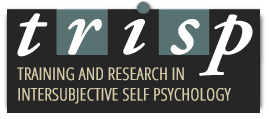What is intersubjective self psychology?
At TRISP – Training and Research in Intersubjective Self Psychology – we have always combined the best of Self Psychology with the best of Intersubjectivity Theory. The result is that we offer training and continuing education in a highly effective and directly clinical theory of treatment.
How is our theory self psychological?
The founder of self psychology, Heinz Kohut, one of the most important American psychoanalysts of the 20th century, put the sense of self at the heart of his theory. He identified and elaborated three enduring themes that facilitate the development of the self throughout the life cycle. They are:
1) the experience of being seen, of feeling recognized for whom we know ourselves to be, and of feeling understood, which Kohut referred to as mirror selfobject transference;
2) the experience of feeling held by a reliable, steady, and knowing other who can be counted on, which Kohut referred to as idealizing selfobject transference, or merger with an idealized other;
3) the experience of essential alikeness with another, of feeling that we can recognize ourselves in another and feel that the other can recognize themselves in us, which Kohut referred to as twinship selfobject transference.
Kohut defined the task of the therapist to be understanding the patient and making sense of the patient’s experience from within that person’s personal world. This is what it means to be empathic.
At TRISP we believe in the importance of the commitment to the empathic mode of observation and we uphold the importance of the selfobject transferences for the development and transformation of the self.
How is our theory intersubjective?
While Kohut went a long way in recognizing the analyst’s impact – via understanding and interpretation – on the patient’s experience, he still largely held on to the view of the objective analyst whose understanding might be temporarily or protractedly blocked by countertransference issues, and who needed to make sure that his interpretations did not get in the way of facilitating the spontaneous unfolding of the selfobject transferences. He did not conceptualize the subjectivity of the analyst as a co-determining factor – whether good or bad – in the therapeutic exchange. He did not dare to ask himself what the analyst could and needed to do to actively promote the development of the self for fear of being accused of offering a corrective emotional experience; this would have resulted in his being excommunicated from the American Psychoanalytic Association, the analytic community to which he belonged.
It is the theory of Intersubjectivity as developed by Robert Stolorow and others that provides the theoretical foundation to fully conceptualize the analytic process as a two-person psychology. In this model what unfolds in therapy is at all times shaped by the intersection of the subjectivities of both patient and analyst. In the therapeutic situation we have a coming together of all of the patient’s selfobject needs and dreads as well as the therapist’s selfobject needs and dreads. Growth and transformation in both patient and analyst is therefore a function of the field generated by this intersection and by the patient’s and the analyst’s joint capacity to work through the obstacles in the service of establishing the facilitating selfobject environment.
It is as an intersubjective theory that self psychology is most capable of doing justice to the complexities of the therapeutic situation and thus promote understanding and change. And it is as a self psychological theory that the theory of intersubjectivity is focused on the most important enduring developmental themes, the selfobject transferences, by virtue of which transformation and development of the self experience occurs.
Would you like to learn more about intersubjective self psychology?
Come to our 2014-2015 workshop series. You’ll have a chance to learn more about intersubjective self psychology, you’ll meet faculty, and you’ll learn clinical applications of the theory to a variety of issues.
On Friday September 19th at 6 pm I will offer an introduction to the central ideas and core concepts of intersubjective self psychology and Laura D’Angelo will join me to provide an illustrative case example. You’ll see the ideas in action and have an opportunity to participate in the discussion. I hope to see you there!
Posted by Peter Zimmermann

 Find Us on Facebook
Find Us on Facebook
This statement about intersubjective self psychology – the theory that guides us at TRISP – feels so useful to me. Kohut’s beautiful and compassionate understanding of the possibilities for healing and growth in the selfobject relationship has contributed immeasurably to psychoanalytic theory and practice. Stolorow’s nuanced understanding of the rich mix of influences always alive in the therapeutic dialogue moved self psychology into the world of intersubjectivity. And here Peter has so clearly articulated the interplay and mutual influence of these overlapping theories, each upon the other, what we at TRISP have come to call Intersubjective Self Psychology. The upcoming workshop, on September 19th, which will launch our series for 2014-2015, will be a great opportunity to delve more deeply into these ideas. I’m looking forward to it and hope to see others there.
This first workshop sounds really exciting and a great way to begin the entire series. Peter captured so succinctly and so well both what Kohut began and what Stolorow offered. No matter how little or how much we know about this, there is always more to take in. I too am looking forward to attending – to soak in more and among new and old attendees.
PS I forgot to mention that I’m also looking forward to seeing & listening to Laura D her clinical example, which shall be special.